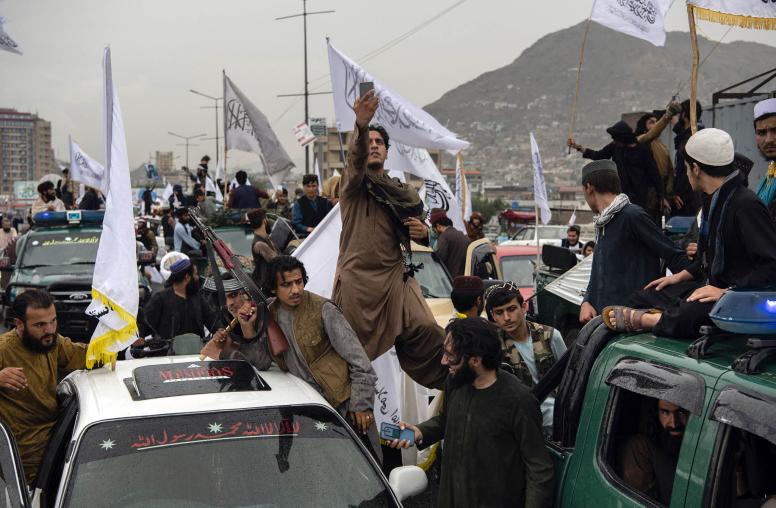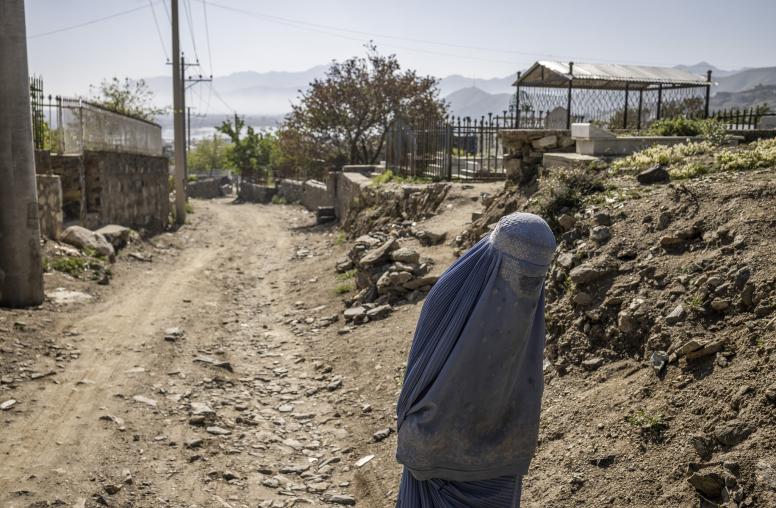Afghan Women Step Up in Local, National Taliban Talks
First Lady Rula Ghani and USIP Visit Reveal Ways Women Seek to Reduce Violence
Amid a spate of recent Taliban attacks across Afghanistan, I heard a different but equally important story during a visit to Kabul last week: women from major cities to rural villages are taking action to defuse local tensions with the militants, prevent recruitment to extremist groups and, at the national level, to pave the way for peace with the Taliban. It’s a trend that Afghanistan’s first lady, Rula Ghani, highlighted during a discussion at USIP in Washington today.

“Women no longer want to wait for peace to fall in their lap,” Ghani said in her second appearance at USIP as first lady. “They are working for it.”
Ghani in May chaired an international symposium in Kabul on reviving women’s traditional peacemaking roles in Afghanistan. It was the third in a series that began in Washington in 2013 and continued in Oslo, Norway, in 2014. Ghani addressed the issue in her USIP speech and a discussion that followed that also included Representative Susan Davis, a California Democrat. Davis said she has seen improvement in the involvement of women in society in Afghanistan over the years that she has been traveling there. She said one Afghan woman told her she knew conditions were changing when she noticed her son showing more respect to her daughter.
Among the biggest recent developments is the increase in the representation of women on Afghanistan’s High Peace Council, established under then-President Hamid Karzai in 2010 to negotiate with elements of the Taliban willing to give up armed conflict. This year, under President Ashraf Ghani, the council was streamlined and restructured, with a new strategy that recognizes the crucial and active role of women.
Women on the High Peace Council
The number of council members was reduced to 63 from 70, but the number of women increased, to 12 from 9. Among them are prominent women’s rights activists, some of whom have prior professional and educational experience in peacebuilding and conflict resolution. In the past, the council was made up mostly of political appointees to appease different fighting factions, and the women members were viewed as symbolic, a gesture to mollify the international community and civil society. But now, in addition to its Kabul-based membership, the council has provincial boards, too, and administrative staff in all 34 provinces, each including at least two women among its members.
These advances stem in part from the government’s 2015 National Action Plan under United Nations Security Council Resolution 1325, a global measure adopted in 2000 that calls for governments to protect women and girls in violent conflict and involve them in all aspects of security.
Still another shift has developed over a longer period: the growing role of women in defusing conflicts in their communities. I heard from some of them, including High Peace Council members, last week. Hailing from Afghanistan’s north, east and southeast, their views about their roles and responsibilities in peacebuilding were as diverse as their backgrounds.
In most parts of the country, when women are past childbearing age, they often are accepted as elders—spin sare—and help settle disputes. Some have reached out to local Taliban in their communities to encourage them to put down their guns and join the peace process, especially when women are either related or close neighbors.
Home Visits to Reduce Radicalization
One school teacher who isn’t involved in the peace council but teaches religious subjects in one of Afghanistan’s major cities told me she has made it a mission to visit homes where she knows that one or more male members have affiliation with the Taliban. She speaks to the mother to persuade her, using lessons from Islam, that she has a responsibility to prevent her sons from joining armed groups. The teacher said she has managed to earn the respect of Taliban in her community because of her religious knowledge and the fact that she explains things using arguments based in Islam.
Still, a few women I spoke with expressed skepticism that they could be influential in direct mediation and negotiation with Taliban who are not from the same community, because of lingering social strictures.
But negotiate they do, and they often distinguished their approach from that of men. One council member from a northern province told me, “When men engage in peace talks, they focus on power and resources. But when we [women] are engaged, we focus on the well-being of our family and community members.”
A woman from the outskirts of Kabul province told me, “We are committed to peacebuilding because we face the horrors of war every day. We have had enough of this war and bloodshed.”
Rula Ghani noted that a more peaceful future will require a culture shift from one in which violence is power to one that values peace more.
“The change in culture must come from within,” she said. “It has to be organic.”



